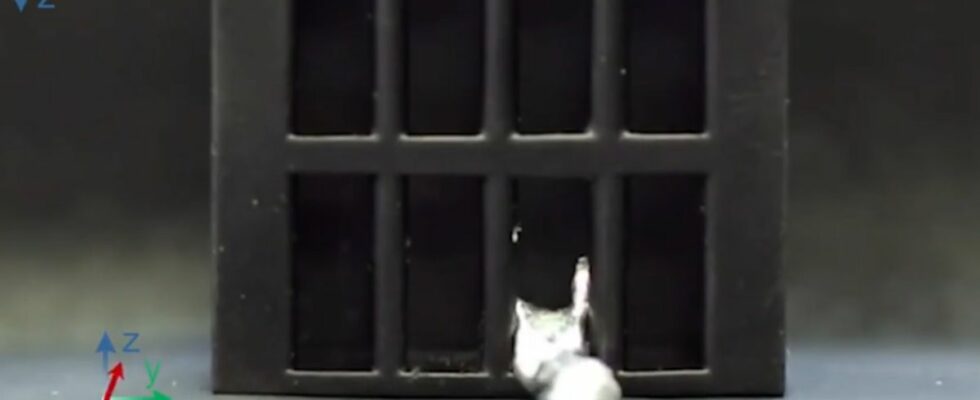The robot comes out of the cage with extraordinary dexterity. © Qingyuan Wang, Chengfeng Pan, Yuanxi Zhang, Zhipeng Chen, Carmel Majidi, Lelun Jiang
T-1000 (character from the movie Terminator 2) in real life ? Scientists have just developed a robot with rather original physical characteristics, the latter being able to liquefy on demand. The team has just published a first scientific article in the journal matter.
The robot presented by the scientists was developed as part of a more general study on metal microparticles known as magnetoactive phase transition. The material constituting the robot allows it to change shape, move quickly and carry heavy loads. To succeed in modifying the state of matter, the researchers subject the robot to alternating current magnetic fields, bringing its temperature to 35°C. The robot then goes from solid state to liquid state in 1 minute 20 seconds, a real feat.
In the liquid state, the robot can then be steered by several magnets quite precisely. Such technical prowess, in particular the ease of moving and carrying heavy loads, would be a first in the field, according to the researchers. Specifically, the currently developed prototype could support up to 30 times its own weight and travel up to 4.8 km/h.
Considered medical applications
A real breakthrough in research that could form the basis of major innovations in various sectors of industry. “Potentially this material system can be used for applications in flexible electronics, healthcare and robotics“, advance Chengfeng Pan, engineer at the Chinese University of Hong Kong and co-author of the study relayed by the washington post.
The medical field seems a very serious track for the subsequent use of the device. The researchers conducted a complex experiment and demonstrated how the little robot could enter a replica of the digestive organ, order it to grab an unwanted object, and bring it out. A first technical demonstration which cannot yet be reproduced in humans because of the material constituting the device (neodymium-iron-boron).
The different steps to remove a foreign body in the stomach. © Qingyuan Wang, Chengfeng Pan, Yuanxi Zhang, Zhipeng Chen, Carmel Majidi, Lelun Jiang
“People who are really interested in the clinical applications of these devices want to find materials that can degrade in the body and stay there, without harming the patient.“, analyzes Brad Nelson, professor of robotics at ETH Zurich, relayed by the washington post.

